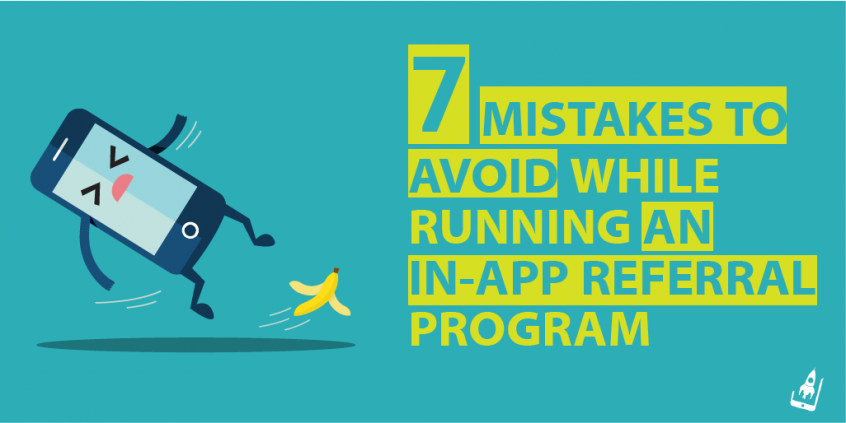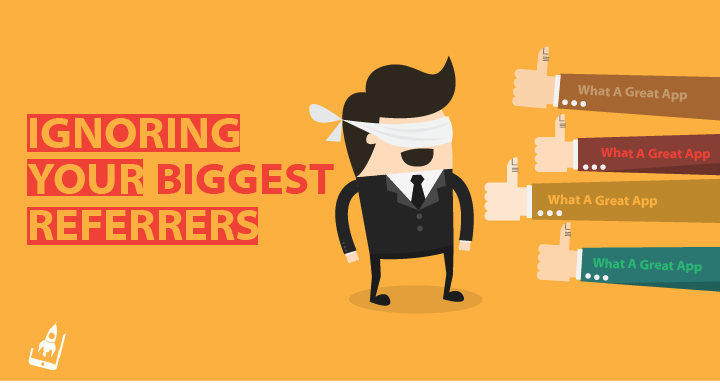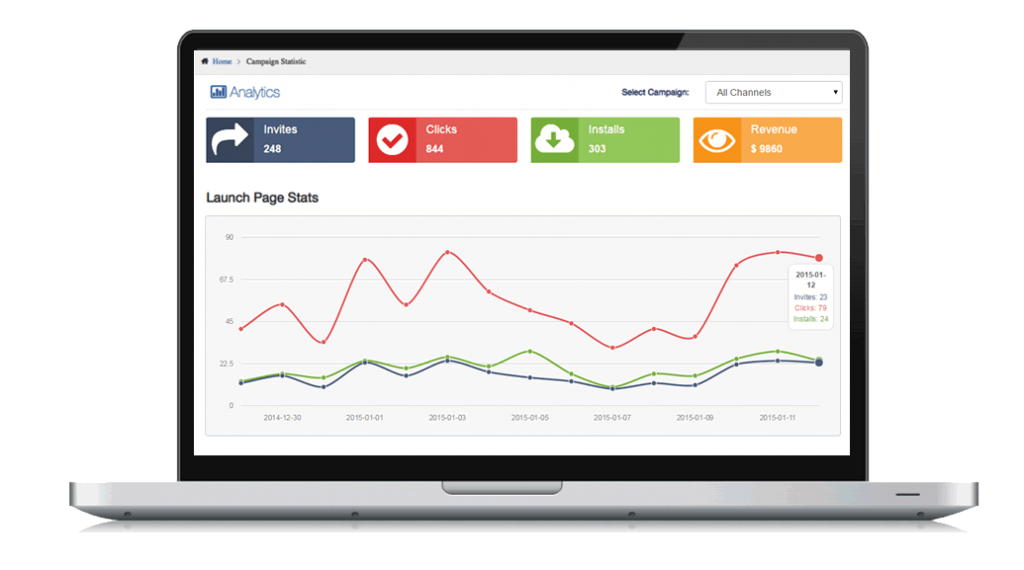How do you feel about In-app referrals? Considering that we help apps to scale well through this technique, it is quite close to our heart. Therefore, we would love to share our insights with you all on this topic.
We’ve discussed quite a few success stories, and each day the tribe of apps opting for In-app referral seems to increase.
Through this post, we wish to address the common mistakes that most developers may fall prey to while executing an In-app referral program.That being said, by working on these gray areas one can make In-app referrals the star of their overall marketing plan!
Not knowing enough about your app users
It may be hard to gauge your app referrals if you do not know who your users are, why do they use your app and what motivates them to refer your app. This may be an issue but can be simplified by creating user personas for users that may refer your app.
We’ve created a mini guide on the same topic which will come in very handy for developers who are dealing with it for the first time.
Not approaching enough app users
Believing that all your app users are aware of your ongoing In-app referral program isn’t an intelligent way of thinking.
High competition within this segment demands that all your customer base is regularly tapped through numerous ways:
Emails:
An e-mail marketing campaign that caters specifically to referral users can turn the tables in your app’s favor.
Developers can create a newsletter with the right call to action button and a customized landing page for its referral users.
This will increase the chances of its app being referred. Again the idea is to personalize it as much as possible. We have come across a lot of apps that send lackluster emails to their users without an iota of human touch to it. In most cases, it doesn’t yield the expected result leaving the developer disappointed. Developers should also ensure that these emails are mobile friendly since a majority of users today use a mobile device over the web.
SMS and Push Notifications:
Sending SMS and Push notifications about your In-app referral program to your user base ensures that you are heard loud.
Research has proved that most users are hooked to mobile devices these days-67% of cell owners find themselves checking their phone for messages, alerts, or calls — even when they don’t notice their phone ringing or vibrating, this is a strategy that developers should bank on.
Ignoring Your Biggest Referrers
Even before you launch your app or an In-app referral program, there are a few users who will be ready to refer your product with or without a reward. While thinking of an app referral program, we often tend to sideline our biggest referrers-our employees and partners.
Your employees may be the best advocates and help you significantly is spreading the word-of-mouth around your In-app referral program. App marketers can run an exclusive program for its employees who in turn can share details within their extended network. By using this technique, the developers can benefit in two ways. Firstly an exclusive program for employees can be used to test a bigger pool of users and secondly it would add more authentic app users to your kitty.
Running Complex In-app Referral Program
Albert Einstein once said-“ If you can’t explain it simply, you don’t understand it well enough”. In our opinion, every developer can take inspiration from this statement and device an In-app referral plan that is simple for the app user.
Ease of Use– The most important parameter here is the ease of use that your potential or existent users associate with the in-app referral plan. A good In-app referral plan is the one that can be easily seen by the customers is the app menu. It should also enable users to share a referral link on multiple social channels with ease. Apart from this it users should be able to track their rewards, and generate customized referral links in no time.
Clarity in the message – Make sure that the terms and conditions of your In-app referral program are crisp and clear. It is imperative for an app user to understand how your plan works and what’s there in it for them since it may be often misinterpreted. Don’t forget that this simple oversight may lead to negative publicity and bad ratings on the app store.
Not Following-Up On Referral Leads
Not following up on your referral leads is like committing suicide and reflects on the laxity of the team executing it. An in-app referral program isn’t something that should be considered for a short duration, considering that newer users will continue to explore your app (and may bring in continual business). The idea is to highlight the in-app referral program to new users and at the same time keep existent users hooked with a good reward strategy.
This may be done through product newsletters, referral surveys, social media, banner ads on the website to name a few.
Not tracking analytics
A lot of developers focus their energy on marketing an In-app referral and little or very less focus is given on analyzing this data. This makes the entire exercise quite futile. There’s no use in promoting a referral program if you cannot pinpoint the number of app users it brought back.
Limited analytics can become a roadblock for developers in the long run since it limits their chances of improving a referral program. An intelligent approach here is to analyze all the critical data points like the number of clicks, installs, source of installs, sales etcetera related to your app referral program. This may be a cumbersome data crunching exercise that is made simple by AppVirality that can help developers in tracking downloads.
Choosing One Way Referral Over Two-Way Referral Plan
Though this assumption isn’t backed by research, it is still logical. Most In-app referral programs owe their success to a two-way model, in which both the referrer and the recipient gets benefitted by the app. There are numerous examples to quote here, but the best ones are seen while using taxi sharing apps where a recipient gets a free ride, and the referrer gets added credits.
It makes more sense to offer some kind of a reward in the form of credits, vouchers or cash that benefits both the parties involved. Research has also proven that offering a reward increases the likelihood of a referral, however the size of the reward does not matter.
There you have it! The 7 mistakes to avoid while running an In-app referral program. Designing a referral plan with this in the background will yield a more targeted and efficient strategy for your app. Can you recall any mistakes or do you want to add more to this thread? Either way, do share your comments below.
If you are looking at creating a fuss-free In-app referral program, do drop us a line at growth@appvirality.com and, we’ll be glad to assist you!
P.S- Have you seen our latest infographic, that talks about In-app referrals?



